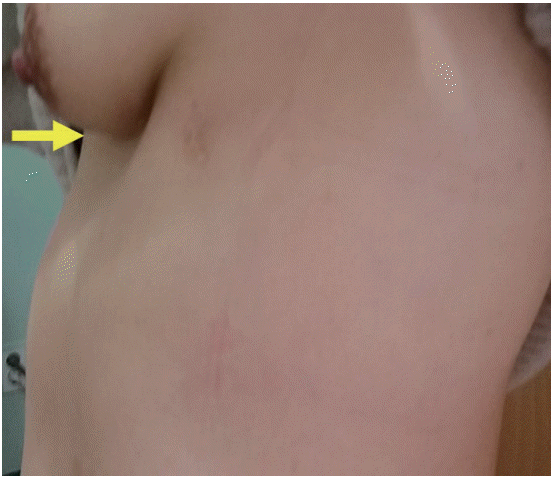A 52-year-old woman presented with a gastric subepithelial lesion (SEL) on routine endoscopy. Upper endoscopy revealed a 5-cm SEL at the anterior wall of the upper body of the stomach (Fig. 1A). Neither a cushion sign nor a rolling sign appeared. Endoscopic ultrasonography revealed an extragastric lesion with sharp hyperechoic margins with posterior acoustic shadowing, which interrupted the detailed examination to observe inner structures (Fig. 1B). Abdominal computed tomography revealed a deformity in the left chest wall, with resultant compression of the stomach (Fig. 1C). Further inspection showed a sunken deformity in the left chest wall (Fig. 2). Final diagnosis was pectus excavatum, a congenital deformity of the anterior thoracic wall in which the sternum and rib cage grow internally.
 |
 |





 PDF Links
PDF Links PubReader
PubReader ePub Link
ePub Link Full text via DOI
Full text via DOI Download Citation
Download Citation Print
Print



